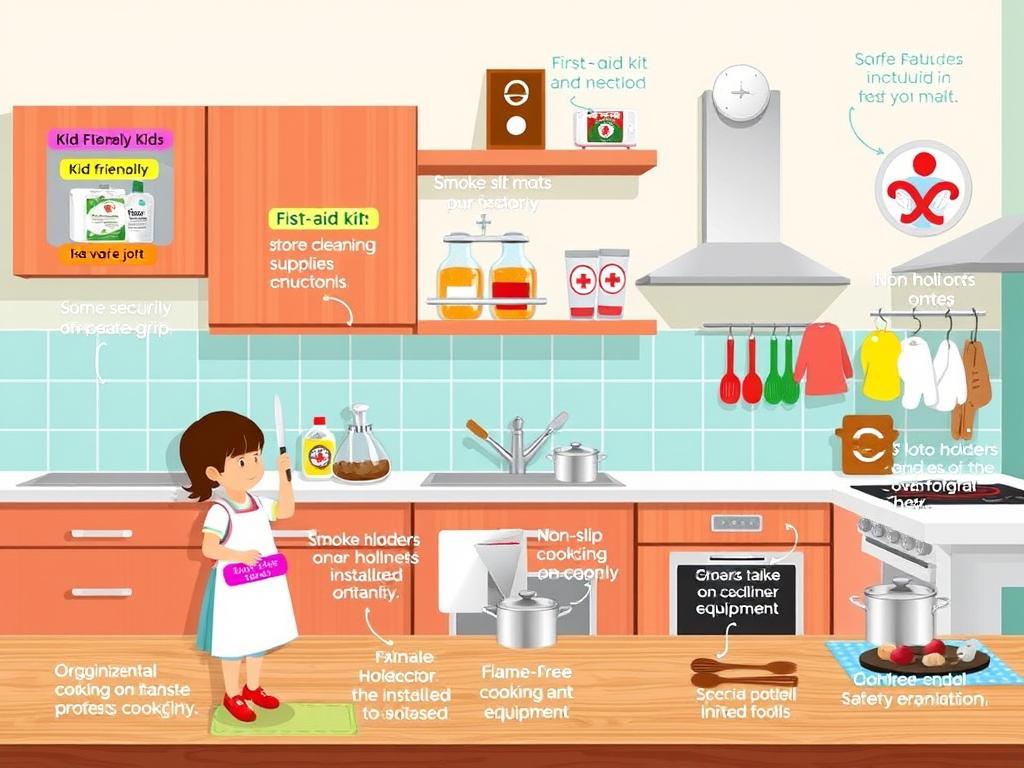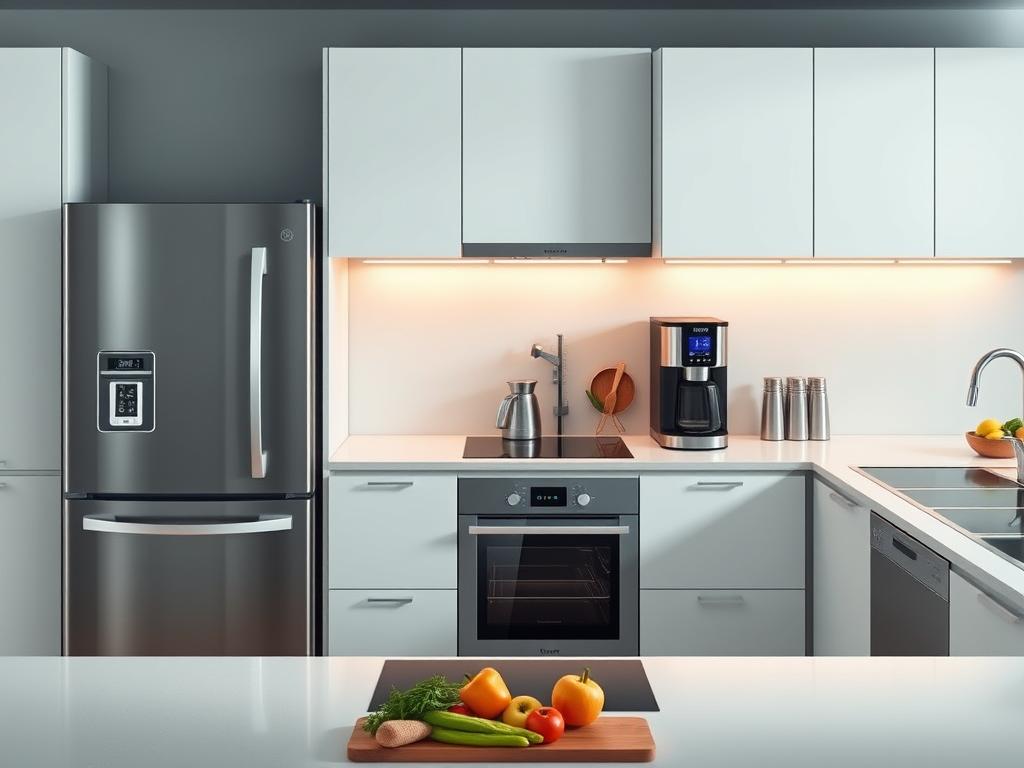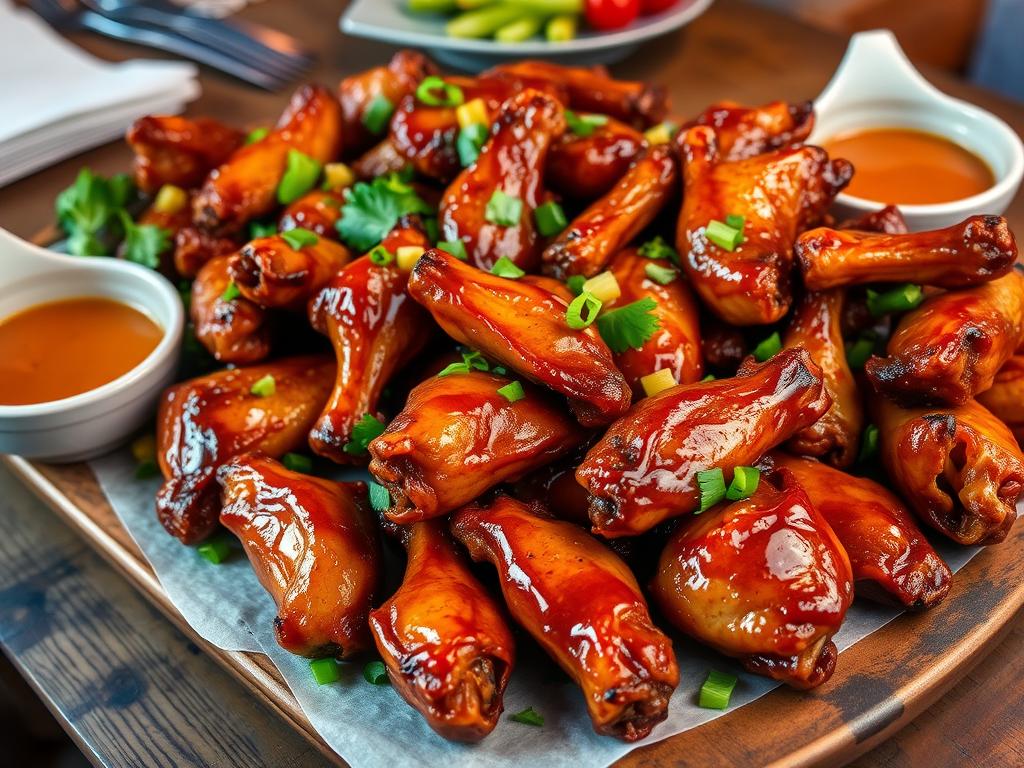Every time we step into the kitchen, we enter a world filled with love, laughter, and sometimes, unexpected hazards. For families, creating meals together not only nourishes our bodies but also strengthens our bonds. However, amidst the joyful chaos of simmering pots and sizzling pans, it’s crucial to remember that kitchen safety is paramount, especially for our curious little helpers. Did you know that roughly 172,000 residential cooking fires occur each year in the United States? As cooking remains the leading cause of fires and injuries in homes, prioritizing safety is not just a good practice; it’s essential for a nurturing environment.
Understanding the foundations of kitchen safety is vital for keeping our families safe. This article will explore the 10 Essential Kitchen Safety Tips for, helping you create a secure cooking space while making cherished memories with your loved ones. By implementing simple, effective practices, we can significantly reduce the risk of accidents, allowing us to focus on what truly matters—the joy of cooking together.
Key Takeaways
- Kitchen safety is key to reducing the risk of accidents, especially with children in the kitchen.
- Understanding common kitchen hazards helps maintain a secure cooking environment.
- Teaching kids kitchen safety creates lifelong habits.
- Proper food handling techniques prevent foodborne illnesses.
- Regular cleaning and organization can significantly enhance kitchen safety.
- Being aware of fire safety precautions protects your home from potential disasters.
Understanding Kitchen Hazards
The kitchen, often referred to as the heart of the home, comes with numerous potential hazards that can pose risks to families, especially young children. Understanding these dangers is the first step in ensuring a safe cooking environment. Regular discussions about kitchen safety practices can play a significant role in preventing accidents.
Common Kitchen Hazards
A variety of kitchen hazards exist, many of which can lead to serious injuries if not managed correctly. Some of the most prominent hazards include:
- Sharp knives and cutting tools: Essential for food preparation but can cause severe cuts.
- Hot surfaces: Stovetops, ovens, and even microwaves can lead to burns if touched.
- Electric appliances: Misusing devices like food processors or blenders can result in electrocution.
- Detergent packets or pods: These may look like candy to young children, creating a risk of ingestion.
- Fire hazards: Unattended cooking can lead to kitchen fires, a common occurrence in many households.
Parents should take proactive measures, such as keeping dangerous items like detergent pods and sharp tools in high, locked cabinets. Ensuring pot handles are turned toward the back of the stove can prevent children from grabbing them. Additionally, matches and sharp cutting appliances should be stored safely out of reach.
The Importance of Awareness
Awareness of kitchen hazards is crucial for every family member. It is essential to engage in conversations highlighting kitchen safety practices to develop a culture of caution. Teaching children proper hand hygiene, such as washing hands before and after handling food, is vital for safety. Being aware of cross-contamination and the importance of storing food correctly can reduce the risk of foodborne illnesses. Parents are advised to keep fire extinguishers accessible and routinely check for potential hazards, ensuring that the kitchen remains a safe place.
By integrating educational activities about kitchen safety, families can foster responsibility and encourage each member to be vigilant in the kitchen. Regularly assessing kitchen environments for potential hazards can significantly enhance overall safety in cooking spaces.
Safe Knife Handling Practices
Ensuring kitchen safety often begins with proper knife handling. By teaching safe knife handling practices, families can minimize the risk of injury while cooking. Understanding how to choose the appropriate knife for various tasks greatly contributes to kitchen safety rules. Each knife serves a unique purpose, such as paring knives for peeling fruits, chef’s knives for chopping vegetables, and serrated knives for slicing bread. Parents can guide children in recognizing which knife to select, emphasizing the importance of quality tools designed for specific tasks.
Choosing the Right Knife
Selecting the right knife is essential for effective and safe meal preparation. Here are a few tips to help in this process:
- Paring knives: Ideal for intricate tasks like peeling fruits.
- Chef’s knives: Versatile for chopping and slicing various ingredients.
- Serrated knives: Best suited for cutting bread without crushing it.
By choosing the right knives, families can adhere to kitchen safety rules while fostering safe knife handling practices among young cooks.
Proper Cutting Techniques
Adopting proper cutting techniques is crucial to enhance safety while preparing meals. Always employ a cutting board to maintain stability and keep the knife’s edge pointing away from the body. Focus on using slow, deliberate movements to avoid accidents, especially when children are using knives. Teaching kids to keep their fingers tucked in while cutting will protect them from potential injuries. For additional strategies on managing minor injuries, refer to recommended tips. These practices will not only help in preventing accidents but will also ensure that everyone feels more confident in the kitchen.
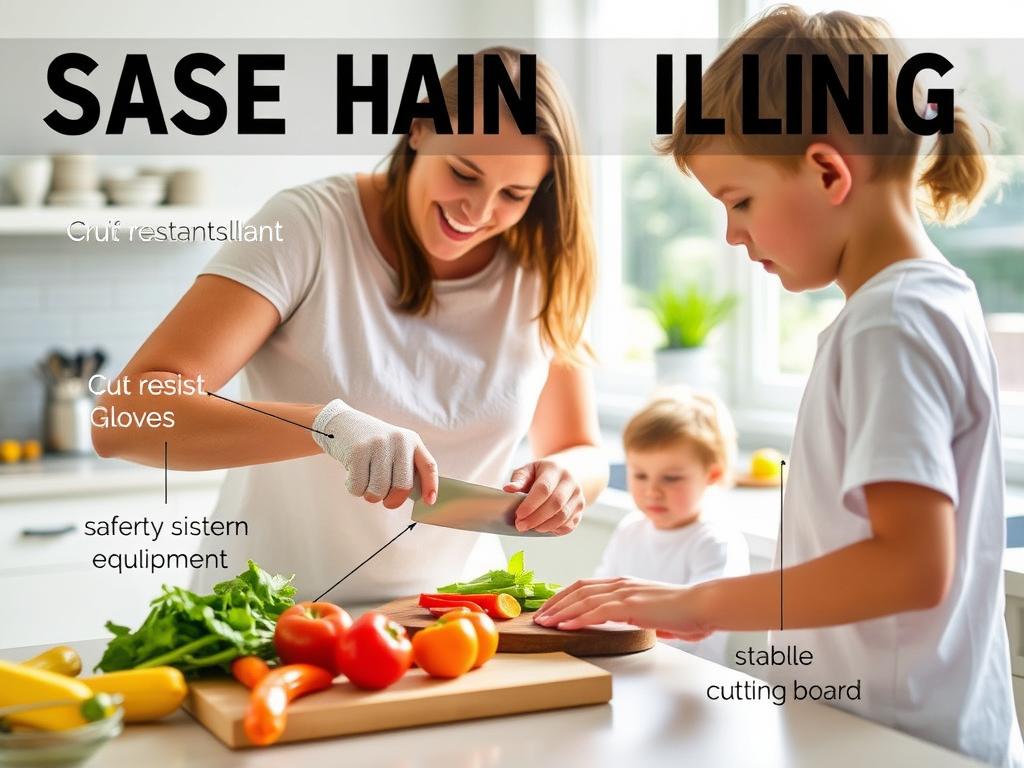
Cooking with Kids: What You Need to Know
Engaging children in the kitchen not only fosters a love for cooking but also emphasizes kitchen safety for kids. Assigning age-appropriate tasks allows children to learn essential skills while minimizing risks. For younger children, simple activities like washing vegetables or stirring ingredients are ideal. Older kids may be capable of more complex tasks like measuring ingredients or using the microwave. Understanding the right activities for each age group enhances the cooking experience and reinforces safety measures.
Age-Appropriate Tasks
Here are some suggested age-appropriate tasks for children in the kitchen:
- Toddlers (Ages 2-4): Help wash vegetables, carry lightweight items, and assist with simple stirring.
- Preschoolers (Ages 4-5): Pour dry ingredients, spread butter or jam, and assist in assembling sandwiches.
- Early Elementary (Ages 6-8): Measure ingredients, use safe utensils, and make simple recipes with supervision.
- Older Kids (Ages 9-12): Operate the microwave, follow recipes independently, and prepare basic meals.
Assigning these age-appropriate tasks ensures that kids build independence in the kitchen while practicing kitchen safety for kids.
Supervision is Key
One essential aspect of cooking with kids is continuous supervision. Children should never cook alone, especially when using sharp tools or heating appliances. Adult supervision provides guidance and enables safe practices. Parents should remain nearby, ensuring that kids understand the safe operation of kitchen appliances like stovetops and ovens.
Encouraging open communication is equally important. Kids should feel comfortable asking questions, which nurtures their confidence in the kitchen. Awareness of potential hazards, such as hot liquids and sharp objects, is vital in preventing accidents. Following safety guidelines can significantly lower kitchen-related injuries, which affect approximately 67,000 children annually according to the National Electronic Injury Surveillance System (NEISS).
Preventing Burns and Scalds in the Kitchen
Burns and scalds pose significant risks in the kitchen, especially for children. Establishing effective kitchen safety precautions can dramatically reduce these dangers. Parents should prioritize understanding safe temperature guidelines and the proper usage of oven mitts to ensure everyone remains safe while cooking.
Safe Temperature Guidelines
Maintaining safe food and liquid temperatures is vital for preventing burns. The recommended cooking temperature for meats varies depending on the type, but reaching the correct internal temperature can prevent harmful bacteria from causing illness. Hot liquids can cause severe burns; therefore, parents should set water heaters to a maximum of 120 degrees Fahrenheit, minimizing scald hazards. It is crucial to inform children about the dangers of heated appliances. They should be taught to keep a safe distance from the stovetop and other hot surfaces.
Using Oven Mitts Effectively
Oven mitts are indispensable tools for preventing burns when handling hot cookware. Kids should be instructed on how to wear oven mitts properly, ensuring full coverage of hands and forearms when retrieving items from the oven. Encouraging safe techniques, such as never reaching into a hot oven to grab something without proper protective gear, is essential for preventing burns. For further information on kitchen safety, explore strategies that can help. Proper training in the correct use of oven mitts can significantly lower the risk of kitchen accidents.
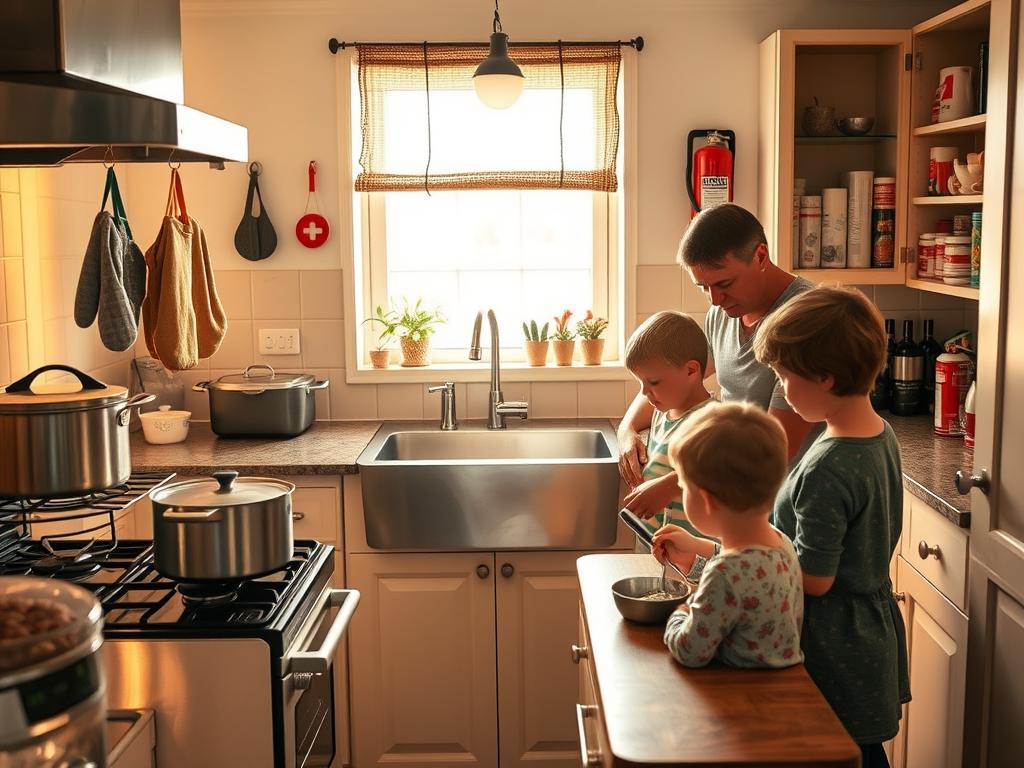
Research highlights that about 70% of scald injuries are preventable through careful attention to kitchen safety guidelines. Parents should remain vigilant about monitoring children around kitchen hazards to further minimize the chances of preventing burns.
Cleaning Up Smartly
A clean and organized kitchen plays a vital role in ensuring kitchen safety practices. By effectively organizing the workspace, families can minimize the risk of accidents and create a more efficient cooking environment. Establishing designated spaces for utensils and food items leads to easy access while reducing clutter, allowing for safer meal preparation.
Organizing the Workspace
Utilizing smart organizing strategies can transform your kitchen space. Embrace the concept of mise en place, which involves preparing and arranging all ingredients and tools before cooking. This practice reduces mistakes and saves time, particularly during busy meal preparations. Below are effective tips for organizing your kitchen:
- Keep frequently used utensils within reach to streamline cooking tasks.
- Label containers to quickly identify ingredients, improving efficiency.
- Have a designated garbage bowl handy to collect waste while cooking, minimizing trips to the trash can.
- Ensure dishtowels are readily available for quick cleanups, promoting cleanliness.
Cleaning Spills Immediately
Cleaning spills immediately is crucial to maintaining kitchen safety. Allowing spills to sit may lead to slips and falls, particularly in high-traffic areas. Encouraging children to clean spills right away reinforces the importance of kitchen safety rules. Effective cleaning habits can include:
- Using a damp cloth or sponge to wipe surfaces and prevent dried messes.
- Taking quick cleaning breaks during cooking to keep counters clutter-free.
- Regularly washing cutting boards, especially considering studies showing their higher bacterial counts compared to toilet seats.
For more information on maintaining a safe kitchen, check out these essential tips on keeping your kitchen clean and. Embracing these practices will foster lifelong hygienic habits in children, ensuring a safer kitchen for everyone.
| Organizing Strategy | Benefit |
|---|---|
| Mise en place | Streamlines cooking and reduces errors |
| Garbage Bowl | Minimizes trips to the trash, maintaining efficiency |
| Quick Cleanups | Maintains cleanliness and prevents mess buildup |
| Using Dishtowels | Facilitates immediate spill management |
Fire Safety: Essential Precautions
Ensuring fire safety in the kitchen is crucial for every family. Taking fundamental steps such as installing smoke detectors and having a fire extinguisher readily available can drastically reduce risks. With an understanding of these precautions, families can create a safe cooking environment.
Installing Smoke Detectors
Installing smoke detectors throughout the home, particularly in or near the kitchen, is a vital measure for kitchen safety. The National Fire Protection Association (NFPA) states that unattended cooking is the leading cause of home fires. Proper placement of smoke detectors helps to mitigate this risk. Here are some essential guidelines:
- Smoke alarms should be installed on every level of the home.
- They must be placed outside each sleeping area and inside every bedroom.
- It is recommended that they be located at least 10 feet away from cooking appliances.
Regular maintenance includes testing smoke alarms monthly to ensure functionality. Additionally, replacing batteries every six months will keep the detectors operational and ready to alert the family in case of an emergency.
Having a Fire Extinguisher
Having a fire extinguisher accessible in or near the kitchen is crucial. This preparation allows families to respond quickly during a fire emergency. Here are some points to consider:
- Place residential fire extinguishers on every level of the home, including the kitchen and garage.
- Ensure that the extinguisher is easily accessible in case of a fire.
Educating all family members on how to use the fire extinguisher correctly, including the PASS method (Pull, Aim, Squeeze, Sweep), is essential for effective response to small kitchen fires. Regularly checking the expiration date of the extinguisher reinforces a proactive approach to kitchen safety.
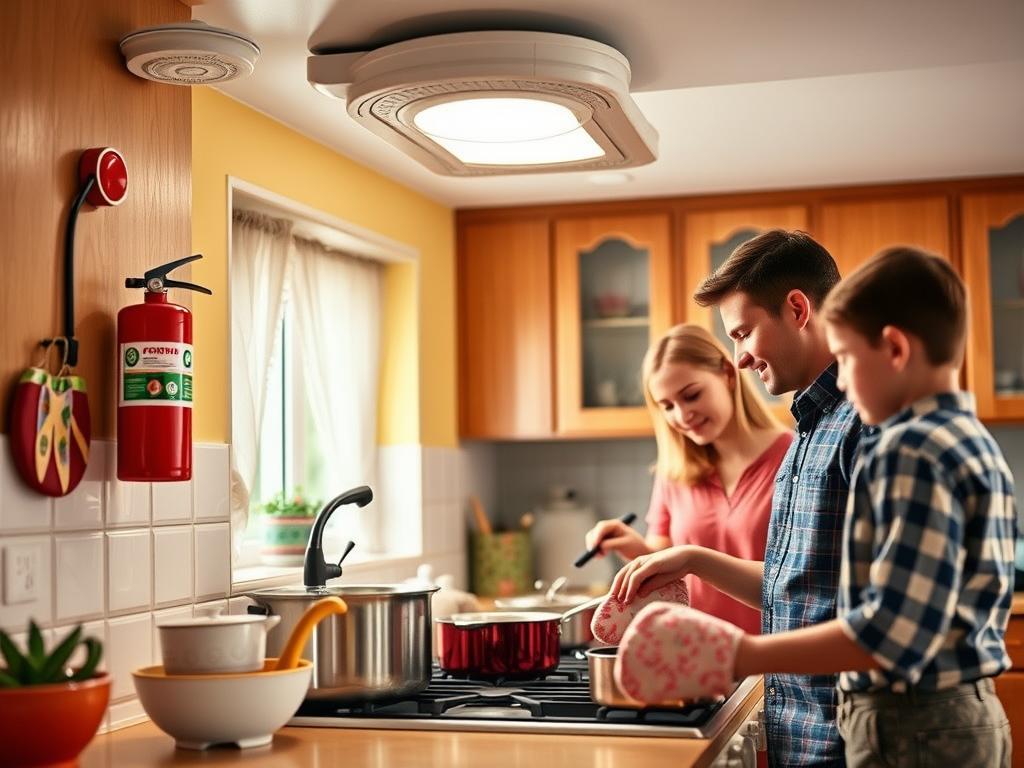
Food Safety Tips for Families
Ensuring food safety in family kitchens requires meticulous attention and education regarding proper food handling practices. Empowering children with knowledge about cleanliness and hygiene can vastly reduce the risk of foodborne illnesses. Implementing key food safety tips for families helps foster habits that last a lifetime.
Proper Food Handling
Good hygiene is the foundation of safe food preparation. Families should emphasize the importance of washing hands before handling food and after touching raw meats. Instruct children to clean surfaces that come into contact with uncooked foods to prevent cross-contamination. Here are some essential practices to follow:
- Wash fruits and vegetables under running water before consumption.
- Avoid tasting uncooked ingredients, particularly raw meat and eggs.
- Store perishables in the refrigerator within two hours of cooking.
- Use separate cutting boards for raw meats and ready-to-eat foods.
Importance of Cooking Temperatures
Understanding cooking temperatures is vital for preventing foodborne illness and ensuring safe meals. Educating children about safe internal temperatures can promote successful kitchen practices. Key temperature guidelines include:
| Food Type | Recommended Internal Temperature |
|---|---|
| Ground Meat | 160°F |
| Poultry | 165°F |
| Fish | 145°F |
| Leftovers | 165°F |
By encouraging children to monitor cooking temperatures, families can enhance food safety practices in their kitchens. Proper food handling, alongside awareness of cooking temperatures, significantly contributes to creating a safe and healthy cooking environment.
Teaching Kids About Kitchen Safety
Engaging children in the kitchen can be a wonderful bonding experience, but it’s crucial to ensure they understand the importance of safety. Teaching kids about kitchen safety can be made enjoyable through fun learning activities that keep them engaged while instilling essential safety practices. Interactive cooking sessions are a great way to implement safety checklists, allowing children to take an active role in their safety education.
Fun Learning Activities
Incorporating playful elements into kitchen safety education elevates the learning experience. Simple cooking activities can include discussing the proper usage of equipment, identifying kitchen hazards, and practicing correct hygiene. This not only nurtures a positive attitude towards safety but also empowers them to recognize impending dangers before they escalate. By transforming the learning process into a fun endeavor, children are more likely to remember and adhere to safety guidelines.
Role-Playing Scenarios
Role-playing scenarios can be an effective way to prepare kids for real-life kitchen situations. Families can simulate various emergencies, such as what to do in the event of a burn or how to handle sharp objects safely. These practice sessions build confidence and familiarity, teaching children how to react appropriately when faced with hazards. Through these activities, families reinforce the concept that kitchen safety for kids is an integral part of everyday cooking, thus contributing to safer kitchen environments.

